Replacement of electrical wiring in the apartment during overhaul
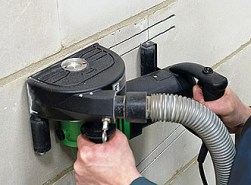 Overhaul in an apartment is a natural disaster that is familiar to many of our fellow citizens. What is included in the mandatory program of this event?
Overhaul in an apartment is a natural disaster that is familiar to many of our fellow citizens. What is included in the mandatory program of this event?
Removing furniture with partial rejection, removing the old floor covering and, possibly, the floor itself, peeling old wallpaper, dismantling old plumbing, interior doors ... And this is just the beginning. Next on the schedule is the replacement of the risers of heating, domestic hot water, cold water and sewage, the alignment of walls, floors and ceilings, the replacement of doors and windows, the installation of new coatings for the same walls, floors and ceilings.
In general, plenty of work. And the older the apartment, the more problems you will have to face. But we did not mention one important point, which is most rational to coincide with the general overhaul of the apartment. It is about replacing the old worn electrical wiring. The need to replace wiring is dictated by ...
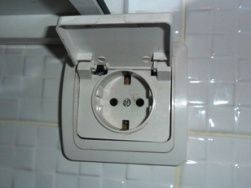 In the era of actively developing socialism, plug sockets in the bathroom were considered unnecessary and unnecessary luxury. Therefore, it is hardly possible to see somewhere "Khrushchev" with "native" outlets in the bathroom.
In the era of actively developing socialism, plug sockets in the bathroom were considered unnecessary and unnecessary luxury. Therefore, it is hardly possible to see somewhere "Khrushchev" with "native" outlets in the bathroom.
But life does not stand still, and the Khrushchev’s are still in operation. And today their owners are increasingly faced with the need to install electrical outlets in the bathroom. It is necessary to connect washing machines, showers, hair dryers, electric shavers and, possibly, some more rare and even exotic types of electrical appliances.
Due to the stereotypes that have developed over decades, sockets in the bathroom were perceived by many electricians as something unnatural: “How so? High humidity, splashes, steel pipes of hot water and cold water, cast-iron risers, and sockets nearby? It’s not just dangerous, but very dangerous! ” ...
Electrosafe private house and cottage. Part 4 (ending). SPD selection examples
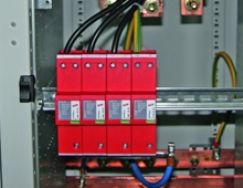 Let's first understand in more detail what we will deal with. Let's start with overvoltage impulses. For calculations and the choice of SPD, we need to know what distinguishes lightning current pulses and current pulses of all other overvoltages. The figure shows what their main difference is - the lightning current pulse is almost 17 times longer than the overvoltage pulse, that is, it has a much greater power.
Let's first understand in more detail what we will deal with. Let's start with overvoltage impulses. For calculations and the choice of SPD, we need to know what distinguishes lightning current pulses and current pulses of all other overvoltages. The figure shows what their main difference is - the lightning current pulse is almost 17 times longer than the overvoltage pulse, that is, it has a much greater power.
Next, I will list some general recommendations based on the practice of using SPDs: 1. Categorically, circuit breakers cannot be used to protect SPDs from accompanying currents. Only fuses. 2. Class 1 SPD should preferably have a monoblock design (without removable modules). 3. An SPD for a lightning current greater than 20 kA (10/350 μs) should be based on the arresters. 4. The cover in which the SPDs are installed should be metal. Now we will use the SPD selection algorithm presented below. Since when powering the house from VLI we have a grounding system ...
Electrosafe private residential building and cottage. Part 4. Surge Protection
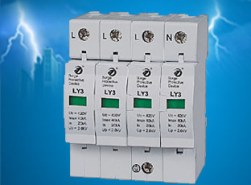 Despite the theoretical possibility of the appearance of pulsed overvoltages with an amplitude of tens of kilovolts in the 0.4 kV power supply system, the REAL value of the amplitude is limited by the pulsed insulation strength of electrical equipment.
Despite the theoretical possibility of the appearance of pulsed overvoltages with an amplitude of tens of kilovolts in the 0.4 kV power supply system, the REAL value of the amplitude is limited by the pulsed insulation strength of electrical equipment.
The impulse insulation strength of electrical equipment with a nominal voltage of 230/400 volts is set by the standard and is taken equal to 6 kV. Based on this, the appearance of voltages higher than 6 kV in electrical circuits is unlikely (the appearance of amplitudes above 6 kV is possible according to Russian scientists only in 10% of cases).
Based on this, ALL electrical equipment up to 1000 volts was divided into 4 categories (for three-phase systems 230/400 volts): category 4 is equipment that can withstand 6 kV surge voltage (electricity meters, automatic machines, arresters, etc.), category 3 is withstanding equipment ...
Electrosafe private residential building and cottage. Part 3. Lightning protection
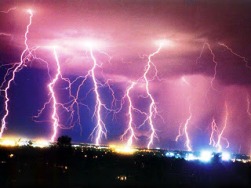 Let's start with the simplest. Suppose we have a residential building (cottage) which is powered by a power line (overhead line) and in which metal communications (gas, water supply, etc.) are not connected. We list the dangers that may await us in this case and then how to deal with them.
Let's start with the simplest. Suppose we have a residential building (cottage) which is powered by a power line (overhead line) and in which metal communications (gas, water supply, etc.) are not connected. We list the dangers that may await us in this case and then how to deal with them.
In case No. 1, a direct lightning strike can destroy the building itself, cause a fire in it, damage the electrical equipment of the house and electrical appliances included in the outlets. In this case, there is only one protective measure - the installation of external lightning protection on the house.
In case No. 2, the TV will fail, possibly igniting it. Protection measures: - installation of the antenna in the external lightning protection zone and / or disconnect the antenna cable from the TV. In case No. 3, a surge voltage of tens of kilovolts is brought into the house, which will cause damage to the electrical wiring insulation and damage to electrical appliances connected to outlets. Protection measures: turn off the power at the entrance to the house at the time of departure ...
Safe wiring in a wooden house: not a myth, but reality
 The most popular material for the construction of country houses was and remains a tree. Which, with all its many advantages, has one serious drawback, is, as firemen say, “combustible material”.
The most popular material for the construction of country houses was and remains a tree. Which, with all its many advantages, has one serious drawback, is, as firemen say, “combustible material”.
Fire statistics indicate that more than half of fires in wooden houses occur due to faulty wiring. In practice, the main cause of malfunctions and the subsequent short circuit is most often a violation of the integrity of the insulation of the wires in the wiring. As a rule, this occurs either due to the increased load on the wires or due to mechanical damage to the insulation.
Why is this happening? Most homegrown "jack-of-all-trades", in order to save time, effort and money, lay hidden electrical wiring on wooden bases, boldly hiding it behind the ceiling sheathing, under the wall cladding, baseboards, in the voids of ceilings and pushing the "unreasonable" client .. .
Electrosafe private residential building and cottage. Part 2
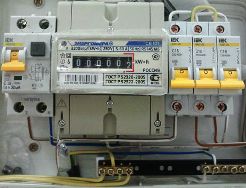 TN - C - S system. The diagram shows the minimum necessary kit to protect your home. The ILV relay will protect your home from overvoltage and undervoltage at the input. And if you can not protect yourself from the increased voltage (breaking the PEN wire is unlikely), but what the hell is not joking, and the reduced voltage can always occur, which is extremely dangerous for electric motors. In addition, if you have an RCD electronic, then with a low voltage or a breakage of only the neutral wire, it may simply not work and leave the house without protection.
TN - C - S system. The diagram shows the minimum necessary kit to protect your home. The ILV relay will protect your home from overvoltage and undervoltage at the input. And if you can not protect yourself from the increased voltage (breaking the PEN wire is unlikely), but what the hell is not joking, and the reduced voltage can always occur, which is extremely dangerous for electric motors. In addition, if you have an RCD electronic, then with a low voltage or a breakage of only the neutral wire, it may simply not work and leave the house without protection.
The RCD will protect you from direct contact with the phase conductor, from leakage currents that can cause a fire, and also instantly turn off the faulty power plant (when the phase closes to its case). The circuit breaker will monitor short-circuit currents and overload in the network. Regarding the re-grounding of the PEN wire. According to the PUE, clause 1.7.61 "... Re-grounding of electrical installations with voltage up to 1 kV ...
Electrosafe private residential building and cottage. Part 1
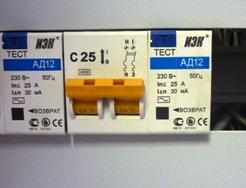 Dear Reader! It is necessary to recognize the fact that in the private residential sector and especially in cottages there is an extremely unfavorable situation in terms of electrical and fire safety. Violations are of a large-scale nature.
Dear Reader! It is necessary to recognize the fact that in the private residential sector and especially in cottages there is an extremely unfavorable situation in terms of electrical and fire safety. Violations are of a large-scale nature.
Especially depressing is the fact that both professional electricians and electrical engineers themselves sometimes do not understand and do not know certain provisions of the EMP and other regulatory documents. The purpose of this article is to help both electricians and homeowners correctly perform certain tasks.
Consider all the dangers that may lie in wait for people and the house from electricity. 1. Direct contact with the human phase. 2. Short circuit (short circuit) between phase and zero. 3. Damage to the insulation of the phase wire, followed by its shorting to the metal casing of the electrical installation ...
